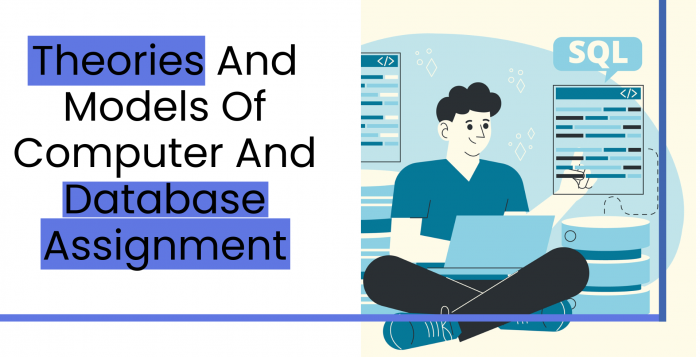Theories And Models Of Computer And Database Assignment
Outline of the Article
Introduction to Computer and Database Assignments
Importance of Theories and Models in Computer Science
Understanding Theories in Computer Science
Significance of Models in Computer Science
Overview of Computer and Database Assignment Theories
Entity-Relationship Model
Relational Model
Hierarchical Model
Network Model
Application of Theories and Models
Real-world Examples
Integration of Theories into Practical Assignments
Challenges and Critiques of Models
Limitations of Theoretical Models
Evolving Nature of Database Systems
Future Trends and Innovations
Advancements in Database Systems
Emerging Theories and Models
Conclusion
FAQs
What are the fundamental theories in computer and database assignments?
How do theories and models impact practical database assignments?
Are there any limitations to using theoretical models in real-world scenarios?
What are the upcoming trends in database theories?
How do evolving technologies influence the development of new models?
Theories And Models Of Computer And Database Assignment
In the realm of computer science, the intricate interplay between theories and models holds a pivotal role, especially concerning assignments related to computer and database systems. These theories and models form the bedrock upon which practical applications in database assignments rest.
Importance of Theories and Models in Computer Science
Understanding Theories in Computer Science
Theories serve as the conceptual framework, providing a structured understanding of how computer systems operate. These theoretical underpinnings elucidate the core principles governing the functionalities of databases, software, and hardware components.
Significance of Models in Computer Science
Models, on the other hand, offer a tangible representation of these theories. They act as blueprints or prototypes that facilitate the visualization and implementation of abstract concepts into practical systems.
Overview of Computer and Database Assignment Theories
Entity-Relationship Model
Among the foundational theories is the Entity-Relationship model, delineating relationships between different entities within a database structure.
Relational Model
The Relational model emphasizes the organization of data into tables, enabling efficient querying and manipulation of information.
Hierarchical Model
Hierarchical models organize data in a tree-like structure, suitable for specific applications that necessitate a hierarchical arrangement of information.
Network Model
Network models, characterized by interconnected data elements, offer flexibility in representing complex relationships between entities.
Application of Theories and Models
Real-world Examples
These theories find practical manifestation in various industries, such as banking, healthcare, and e-commerce, shaping robust database systems that handle voluminous data.
Integration of Theories into Practical Assignments
In educational settings, incorporating these models into assignments sharpens students’ practical skills, allowing them to grasp the nuances of database assignment systems.
Challenges and Critiques of Models
Limitations of Theoretical Models
Critiques often revolve around the limitations of these models, as certain real-world scenarios may not perfectly align with the theoretical frameworks.
Evolving Nature of Database Systems
Furthermore, the dynamic nature of database systems poses challenges as these models need continual adaptation to match the evolving technological landscape.
Future Trends and Innovations
Advancements in Database Systems
The future holds promises of enhanced database systems leveraging innovative technologies like AI and Blockchain to augment existing models.
Emerging Theories and Models
New theories and models are anticipated to emerge, catering to the evolving demands of data management and analysis.
Conclusion
In conclusion, theories and models in computer and database assignments serve as guiding pillars, shaping the way we conceptualize, design, and implement systems. While they lay a robust foundation, their adaptability and evolution remain key in meeting the dynamic needs of technological advancements.
FAQs
What are the fundamental theories in computer and database assignments?
Fundamental theories include Entity-Relationship, Relational, Hierarchical, and Network models.
How do theories and models impact practical database assignments?
They provide frameworks for understanding, designing, and implementing database systems in real-world applications.
Are there any limitations to using theoretical models in real-world scenarios?
Yes, as real-world situations may sometimes deviate from the ideal conditions these models portray.
What are the upcoming trends in database theories?
Advancements in AI, Blockchain, and new models tailored for evolving data management needs.
How do evolving technologies influence the development of new models?
Evolving technologies necessitate the adaptation and creation of new models to accommodate changing data requirements.



